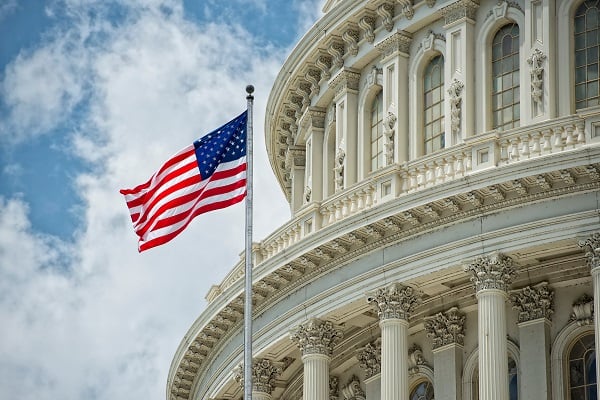D.C. Circuit Upholds U.S. EPA’s HFC Cap-and-Trade Program Under AIM Act
On August 1, 2025, the U.S. Court of Appeals for the D.C. Circuit upheld the U.S. Environmental Protection Agency’s (EPA) authority under the American Innovation and Manufacturing (AIM) Act to phase down hydrofluorocarbons (HFCs) through a cap-and-trade program. In IGas Holdings, Inc. v. EPA, No. 23-1261, a unanimous panel rejected constitutional and administrative law challenges from refrigerant industry members, finding that the AIM Act provides a clear “intelligible principle” to guide EPA’s allowance allocation. The Court also held that EPA’s decision to exclude 2020 market data from its allocation methodology was not arbitrary and capricious.
Congress Eliminates Corporate Average Fuel Economy (CAFE) Penalties for Passenger Cars and Light Trucks
In one of its many changes, the One Big Beautiful Bill Act, enacted on July 4, 2025, eliminated civil penalties for noncompliance with federal fuel economy standards. Specifically, Section 40006 of the Act amends the language of the Corporate Average Fuel Economy (CAFE) statute to reset the maximum civil penalty to $0.00. Although the statute and its implementing regulations otherwise remain in place, this amendment removes any civil penalties for producing passenger cars and light trucks that do not meet fuel economy requirements.

Three Takeaways from the Trump Administration’s Latest Push for Shifts in Domestic Energy Production
On April 8, 2025, President Trump issued three executive orders reflecting the Administration’s push for increased domestic coal production. The orders point to the surge in electricity demand from data centers and other infrastructure required to support Trump Administration goals, including becoming a leader in artificial intelligence (AI), as a key rationale. Here are three takeaways from these orders.

Top 5 Energy Actions You Should Know from President Trump’s First Day
On January 20, 2025, President Trump began his second term with the signing of 26 executive orders (EOs), which included the recission of almost 80 EOs of the previous administration. Trump’s orders contain both repeals of key Biden Administration policies and calls to agency action to reassess treatment of major energy issues associated with domestic energy production. Here are the top five actions to know from President Trump’s first day as the new administration begins its reshaping of U.S. energy policy for his second term in office.
Top 5 Environmental Actions You Should Know from President Trump’s First Day
On January 20, 2025, President Trump began his second term with the signing of 26 executive orders (EOs), which included the recission of almost 80 EOs of the previous administration. Trump’s orders contain both repeals of key Biden Administration policies and calls to agency action to reassess treatment of major environmental issues associated with motor vehicles, energy development, and climate change. Here are the top five actions to know from President Trump’s first day as the new administration begins its reshaping of U.S. environmental policy for his second term in office.
Federal Government Withdraws Proposed Climate Disclosure Requirements for Federal Contractors
On January 13, 2025, the federal government withdrew a proposed rule that would have required government contractors to publicly disclose their greenhouse gas (GHG) emissions and set emissions reduction goals. The withdrawal comes on the eve of the transition to the second Trump administration, which is expected to take a very different approach to climate regulation and disclosure than has been advanced during the Biden administration.

New York Passes Second-in-the-Nation Climate Change Superfund Act
On Thursday, December 26, 2024, New York Governor Kathy Hochul signed into law the second-in-the-nation Climate Change Superfund Act (the “Act”). The Act had first passed the New York legislature in June 2024, shortly after Vermont’s Climate Superfund Act became law. See, Sidley Update.

Recent Developments in U.S. EPA’s Hydrofluorocarbon Phasedown
There have been several recent developments in enforcement, litigation, and regulatory implementation of the U.S. Environmental Protection Agency (EPA) phasedown of hydrofluorocarbons (HFCs).
Vermont and New York Climate Acts are First in a Wave of Likely Climate Change Cost Recovery Laws
On May 30, 2024, Vermont’s Republican governor, Phil Scott, allowed Vermont’s S 259 — also referred to as the “Climate Superfund Act” — to become law without his signature. The stated goal of this law is to mitigate the impacts of climate change.
U.S. Department of Transportation Publishes Final Rule on State Greenhouse Gas Performance Measures
On December 7, U.S. Department of Transportation Federal Highway Administration (FHWA) published a final rule providing state Departments of Transportation (DOTs) and Metropolitan Planning Organizations (MPOs) a national framework to track transportation-related greenhouse gas (GHG) emissions and set targets for reduction. The rule adds a new GHG performance management measure to the existing FHWA national performance measures and creates a system under which state DOTs and MPOs must set targets for reducing roadway travel GHG emissions. Stakeholders that contract with states to build infrastructure should take note of these new mandates.


